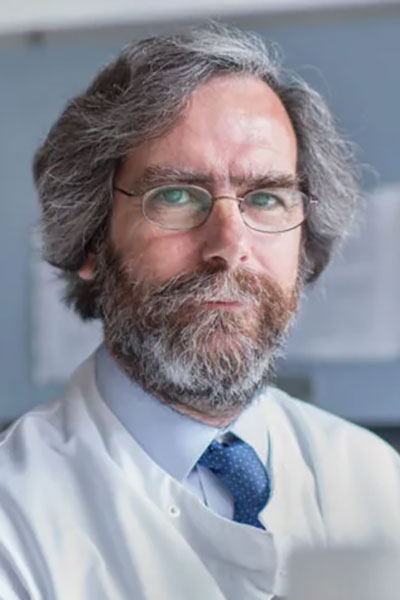Eric Alton, FMedSci, professor of gene therapy and respiratory medicine at the National Heart & Lung Institute, Imperial College London, an NIHR senior investigator, and lead of the GTC, will lead Monday’s Keynote at the ATS 2025 International Conference from 8 to 8:45 a.m. PT in the Moscone Center, Esplanade Ballroom (South Building, Upper Mezzanine). Professor Alton will delve into the breakthroughs and challenges of targeted gene therapy for cystic fibrosis (CF), explore subsequent applications for other respiratory diseases, examine different modalities of gene therapy, and discuss some of the remaining issues in the field.

CF is a hereditary disease caused by mutations in the CFTR gene, which progresses in severity over time and affects more than 100,000 people globally. There are over 2,000 known mutations of the CFTR gene, resulting in varying levels of disease severity based on the specific mutations. CFTR modulator therapies have improved conditions for patients with select defined mutations. Unfortunately, they can’t be applied to 10 to 15 percent of patients with CF due to mutation types or other factors.
“The advantage of gene therapy is that it’s mutation agnostic,” explained Professor Alton. “Our therapy should be suitable for any CF patient, anywhere in the world, with any mutation.”
On February 20, Boehringer Ingelheim, IP Group, the UK Respiratory Gene Therapy Consortium (GTC), and OXB announced the initiation of the LENTICLAIR 1 Phase I/II trial for a novel, first-in-class inhaled gene therapy aimed at improving disease outcomes in patients with CF, regardless of the specific gene mutations responsible for the disease. The trial, which is expected to conclude in early 2027, could represent a significant milestone in treating CF and advancing genetic therapies for other respiratory diseases.
The LENTICLAIR 1 trial will evaluate the safety, tolerability, and efficacy of BI 3720931, an inhaled lentiviral vector-based gene therapy, in adults with CF who are ineligible for CFTR modulator therapy. In Phase I, varying doses will be administered for analysis and used to optimize doses for Phase II. Once Phase II commences, two doses or a placebo will be given to measure clinical value and account for any unexpected side effects or symptoms. Trial participants will then participate in a long-term follow-up study.
“Respiratory gene therapists are often envious of others working in organ systems such as the eye or liver, which are much easier to deliver the genes into,” Professor Alton said. “Everything for us is about ‘Delivery, delivery, delivery.’ That’s the key thing we have to solve.”
While this trial is ongoing, Professor Alton is simultaneously exploring additional targeted gene therapies for other respiratory diseases using insights collected from CF data.
“I think the immediate priority is to apply this knowledge to surfactant disorders for neonatal patients,” Professor Alton said. Slightly further back are alpha-1 antitrypsin deficiency and idiopathic pulmonary fibrosis. We are pressing hard to raise money for these indications; everything depends on that.”
The UK Respiratory GTC was formed in 2001 when the UK’s three leading CF gene therapy groups were joined under one organization to establish whether gene therapy could serve as a clinically viable option for patients with CF. The group has already accomplished several notable successes beyond its role in developing the novel viral vector used in the LENTICLAIR 1 trial. These include the development of an earlier method that delivered the CF gene via a liposome, which showed proof-of-concept that lung function could be improved compared with placebo following repeated application of the gene therapy formulation in a Phase II trial. Professor Alton asserted that this unifying, large-scale collaborative framework was essential in forging a path for investigative and clinical advancements.
“This is difficult science we’re working through. To have 20, 30, up to 70 of us at any one time across three university groups working together is not that common,” Professor Alton said. “If we are going to solve these problems, it’s going to take that long-standing collaboration of scientists and clinicians.”
Extend Your Learning Beyond San Francisco with ATS 2025 Conference Highlights

With so many valuable educational opportunities offered during the ATS 2025 International Conference, attendees are often forced to decide which sessions to prioritize. That’s why the Society is offering three ATS 2025 Conference Highlights packages for those unable to attend ATS 2025 San Francisco or attendees interested in continuing their education after the conference. Check out the packages and pick the one that’s right for you. Learn at your own pace, whenever and wherever you are!

